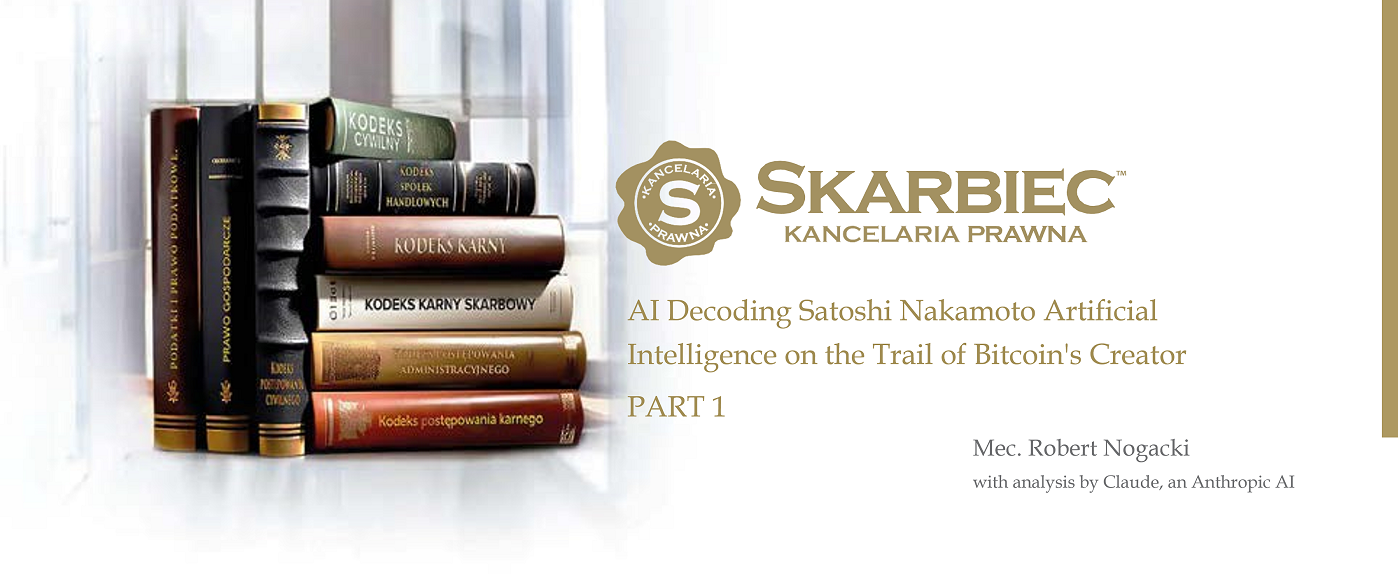
Comparing the Bitcoin Whitepaper and Satoshi’s Emails to Hal Finney
Chapter 11
While stylistic analysis can never provide absolute certainty of authorship, the deep consistencies between the Bitcoin whitepaper and Satoshi’s emails to Hal Finney strongly suggest common authorship. These documents, despite their different contexts, reveal remarkable continuity in technical knowledge, problem-solving approaches, and core writing patterns.
11.1. Foundational Similarities
The most striking parallel between these documents lies in their technical precision and clarity. Both the whitepaper and emails demonstrate meticulous attention to technical detail, with complex concepts explained methodically and clearly. The author displays consistent expert-level understanding when describing code and technical issues, maintaining the same depth of expertise across both formal and informal communications.
The underlying writing structure shows similar patterns across both document types. The author consistently employs concise, direct sentences and carefully defines technical terms before using them. Problems and solutions appear in logical, sequential order, creating a consistent pattern of technical exposition regardless of the communication format.
Common phrases and vocabulary create another thread of continuity between the documents. Technical terms like “nodes,” “blocks,” and “hash” appear with consistent meaning and context. The author’s use of “proof-of-work” terminology remains stable across both formats, as do explanatory phrases describing network operations. This consistency in technical language suggests a single author maintaining their technical vocabulary across different contexts.
11.2. Problem-Solving Methodology
Perhaps most revealing is the consistent problem-solving approach displayed in both documents. The author maintains a methodical, step-by-step approach to addressing technical challenges, whether writing formally or informally. Solutions consistently show careful consideration of edge cases, and security implications receive similar treatment across both formats. This consistent analytical framework strongly suggests a single mind at work.
11.3. Contextual Differences
The documents do show notable differences, but these variations appear to reflect intentional adaptation to different contexts rather than different authorship. The whitepaper employs a highly formal academic style, while the emails adopt a more casual, conversational tone appropriate for peer-to-peer technical discussion. Similarly, the whitepaper uses complex sentence structures and academic vocabulary, while the emails favor shorter sentences and more direct technical communication.
The most noticeable difference appears in the handling of personal elements. The whitepaper maintains complete impersonal, theoretical distance, while the emails reveal personality through phrases like “I hate duplicating code” and “I hate to blame the compiler.” However, these differences align perfectly with the varying demands of formal academic writing versus informal technical correspondence.
11.4. Evidence for Common Authorship
Several key factors support the conclusion of single authorship:
The technical depth remains remarkably consistent, with both documents demonstrating the same sophisticated understanding of cryptography, networking, and systems programming. Technical explanations maintain identical precision regardless of format, suggesting one author adapting their expertise to different contexts.
The problem-solving methodology shows striking consistency. Both documents employ the same systematic approach to breaking down and solving problems, with similar patterns in how solutions are presented and justified. This consistent analytical framework suggests a single mind approaching problems from the same fundamental perspective.
The evolution of writing style between documents appears carefully calibrated to context while maintaining core patterns. The differences in tone and formality reflect appropriate adaptations to different communication needs rather than different authors. The underlying patterns of expression remain consistent despite these surface variations.
Technical vocabulary usage provides another strong indicator of common authorship. The author maintains consistent use of technical terminology across both documents, explaining technical concepts with similar patterns regardless of the communication format.
11.5. Conclusion
The variations between these documents appear to be intentional adaptations to different contexts rather than evidence of different authors. The underlying patterns in technical understanding, problem-solving approach, and core writing style strongly suggest both the whitepaper and emails emerged from the same mind.
This consistency across formats reveals an author capable of adapting their communication style while maintaining their essential technical and analytical framework—exactly what we would expect from a sophisticated technical author writing in different contexts. The evidence strongly supports treating both the whitepaper and the Finney emails as part of the canonical Satoshi writings.

Founder and Managing Partner of Skarbiec Law Firm, recognized by Dziennik Gazeta Prawna as one of the best tax advisory firms in Poland (2023, 2024). Legal advisor with 19 years of experience, serving Forbes-listed entrepreneurs and innovative start-ups. One of the most frequently quoted experts on commercial and tax law in the Polish media, regularly publishing in Rzeczpospolita, Gazeta Wyborcza, and Dziennik Gazeta Prawna. Author of the publication “AI Decoding Satoshi Nakamoto. Artificial Intelligence on the Trail of Bitcoin’s Creator” and co-author of the award-winning book “Bezpieczeństwo współczesnej firmy” (Security of a Modern Company). LinkedIn profile: 18 500 followers, 4 million views per year. Awards: 4-time winner of the European Medal, Golden Statuette of the Polish Business Leader, title of “International Tax Planning Law Firm of the Year in Poland.” He specializes in strategic legal consulting, tax planning, and crisis management for business.







